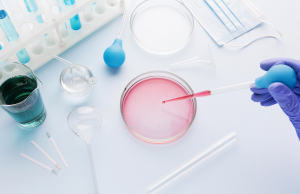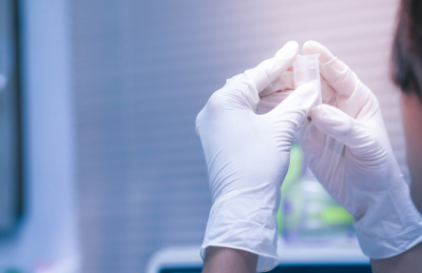There have been many variations on the original composition which was Food and Drug Administration (FDA) approved and termed Bioglass. This composition is known as Bioglass 45S5. Other compositions include:
- 45S5: 45 wt% SiO2, 24.5 wt% CaO, 24.5 wt% Na2O and 6.0 wt% P2O5. Bioglass®
- S53P4: 53 wt% SiO2, 23 wt% Na2O, 20 wt% CaO and 4 wt% P2O5. (S53P4 is the only bacterial growth inhibiting bioactive glass).
- 58S: 58 wt% SiO2, 33 wt% CaO and 9 wt% P2O5.
- 70S30C: 70 wt% SiO2, 30 wt% CaO.
- 13-93: 53 wt% SiO2, 6 wt% Na2O, 12 wt% K2O, 5 wt% MgO, 20 wt% CaO, 4 wt% P2O5.
When bioactive glass is in contact with simulated body solution (SBF), a layer of hydroxyapatite is formed on it, which has a great effect on creating a strong bond between bioactive glass and bone. These materials have the ability to bond with the soft and hard tissue of the body.
Bioglass 45S5 or calcium sodium phosphosilicate, is a bioactive glass specifically composed of 45 wt% SiO2, 24.5 wt% CaO, 24.5 wt% Na2O, and 6.0 wt% P2O5.[1] Typical applications of Bioglass 45S5 include: bone grafting biomaterials, repair of periodontal defects, cranial and maxillofacial repair, wound care, blood loss control, stimulation of vascular regeneration, and nerve repair.
Applications of bioactive glasses:
- Bone substitutes
- Hypoallergenic toothpaste
- Covering implants
- Strengthening dental composites
- Bleeding control and wound healing
- Cosmetics and hygiene products such as skin rejuvenating creams, varnishes, etc.



 Simulated body solution (SBF) is a solution with an ion concentration relatively similar to blood plasma, which is prepared under physiological body temperature and pH conditions. This solution was first used by Kokobo and his colleagues to investigate the changes on the surfaces of bioactive glass ceramics. This test is one of the common tests for investigating the bioactivity or biodegradability of biomaterials, and due to the ease of work and the lack of equipment and facilities, it has a wide range and high application, and at the same time, it provides decisive results for researches. has it.
Simulated body solution (SBF) is a solution with an ion concentration relatively similar to blood plasma, which is prepared under physiological body temperature and pH conditions. This solution was first used by Kokobo and his colleagues to investigate the changes on the surfaces of bioactive glass ceramics. This test is one of the common tests for investigating the bioactivity or biodegradability of biomaterials, and due to the ease of work and the lack of equipment and facilities, it has a wide range and high application, and at the same time, it provides decisive results for researches. has it.